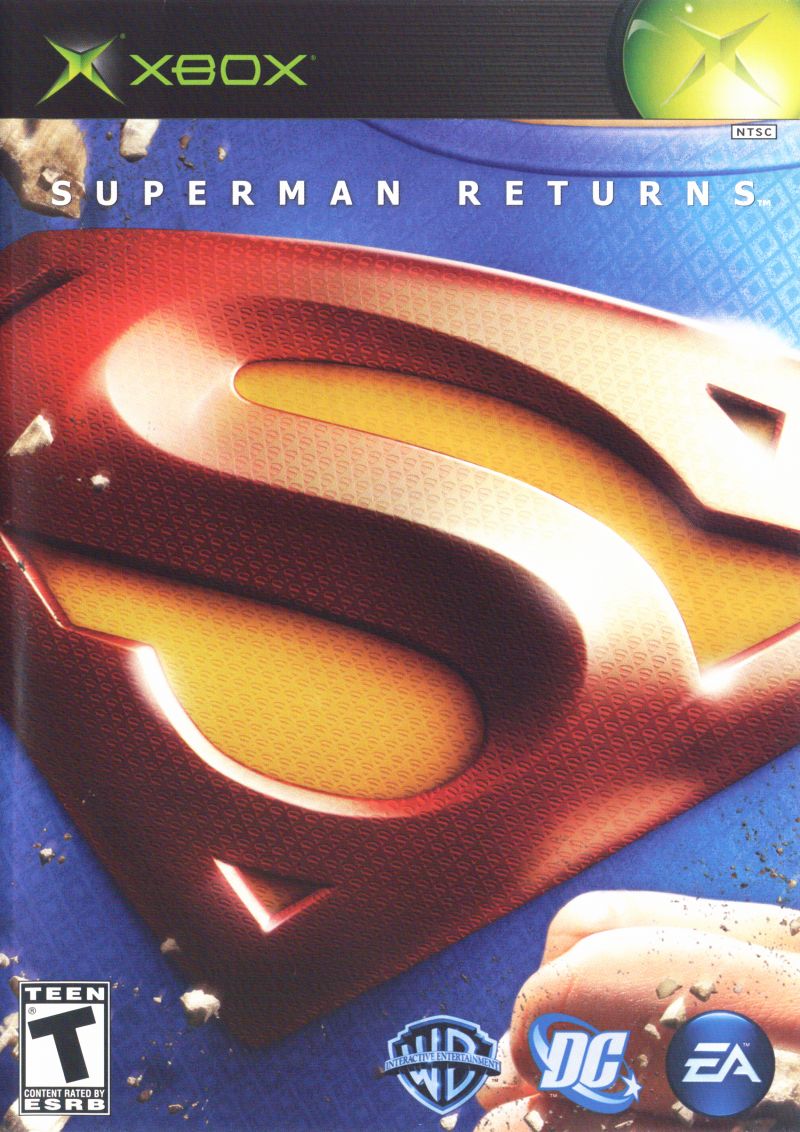

“For five long years the world has stared into the sky, waiting, hoping, and praying for his return.”
For some reason, I stupidly hold out hope that each new superhero movie tie-in game that I play will not be utterly terrible. But they are pretty much universally egregious, with even passably mediocre games being almost praiseworthy when compared to the rest of the pack. By now I have only myself to blame when the inevitable letdown comes, often mere minutes into a game, with only secondary fault due the developers of any particular title. Most movie tie-ins are cynical cash-grabs aimed at parents who think their children will be satisfied with a brand name—rather than, ya know, something actually fun—so developers are often given minimal time and budget to churn something out that resembles a video game.
Superman Returns is particularly atrocious. It plays like a decent demo but there’s simply not enough content to justify the game’s existence. It’s hard to believe hundreds of people spent years of their lives making this. There are like three enemies that you defeat ad nauseam via the mashing of a single attack button, some silly races, and one hundred kittens to rescue (no, seriously). Oh, and you can enter a mini-game where you try to smash a bunch of cars as quickly as possible. Other than that the only thing you can do is tour Metropolis at Mach 2, which is cool but gets old after about a lap and a half because there’s nothing to interact with. You can’t even go inside buildings.
Tiburon Entertainment had been making Madden games since the nineties; they were then purchased by EA (becoming EA Tiburon in the process) and became a go-to sports game developer—basketball, golf, racing, MMA. So what in the world were they doing making a Superman game? Apparently they presented some concept art and a demo of Supes flying around—DC execs bought in; Bryan Singer (director of the film version) signed off on it. The Madden team was officially hired to helm a Superman game. A Warner employee offered an apt analogy. “That’s like opening up a French restaurant and you’re like, ‘Oh my gosh, I got the best sushi chef!'”

One of the biggest issues was cutting through all the red tape from DC and Warner Bros. The movie was hyped big time, so Warner wanted to keep the script details suppressed. This left Tiburon, who had an entire department dedicated to the game’s cinematics, mostly in the dark when it came to scripting the game. There’s a story of a WB rep showing up to the studio with a single film script that had to be shared among everyone, then taking it with him at the end of the day. The development process was also hung up on silly details that DC was adamant about—Superman couldn’t drop civilians off of buildings, he couldn’t hit them with his heat vision, his package had to look just right. To meet their deadline (which had already been pushed from around the film’s theatrical release to coincide with the DVD release), the bulk of their lofty plans had to be cut. It’s a classic case of too many cooks in the kitchen, barely able to produce an appetizer.
It’s a real shame that the grand ideas never materialized—and never really had a chance due to the debilitating administrative intrusiveness. I think the concept of an open-world Superman game, without limitations on his abilities, could actually be great. But what we have here just feels too half-baked to take seriously. After an intro level in Warworld—a kind of gladiator arena on a satellite (wait, what’s this have to do with the movie?)—you find yourself defending Metropolis from a meteor shower. After that, you have zero objectives, zero map markers, and zero indication of what you are supposed to be doing; other than flying around at Mach 2. Do that for a while and the game will randomly generate an enemy encounter, which involves taking on a group of robots, fire and/or ice dragons, etc. These are all devoid of any fun and are merely a necessary evil to give the game some padding in between the boss fights which appear once you’ve cleared a set number of the random encounters. The bosses, each of whom you’ll have to defeat multiple times, are a handful of second-tier DC villains that provide no discernable challenge and only require the barest amount of strategy to defeat.

With such a dearth variety, the main quest takes center stage. It’s such a thankless series of repetitive fights that it’s simply not worth anyone’s time. You level up your abilities little by little, but you don’t even need the upgrades to mash your way through the hordes of generic enemies. Even the boss fights, introduced by cutscenes entirely unrelated to the gameplay, are annoyingly repetitive. This is essentially a glorified demo, somehow half-baked despite the hundreds of thousands of hours that were spent developing it.
There are two things that the game actually deserves commendation for. First is the flying, which feels pretty smooth at high speeds. Low speed maneuvering is not particularly fun, but I’ll take what I can get. Second is the creative workaround to deal with the fact that Superman is basically invincible. Instead of a health bar for Superman, Metropolis itself is given one. So you are fighting not for your own life, but to protect the city you love.
While the controls are actually fairly decent, and it is nice to have Superman’s full arsenal available from the start, there’s just not much substance to the game. It’s profoundly boring; even when considering that it can be completed in like five hours. A total disservice to one of the most iconic characters in American history.
Sources:
Paprocki, Matt. “Superman Returns: What went wrong”. Polygon. 7 February 2017.